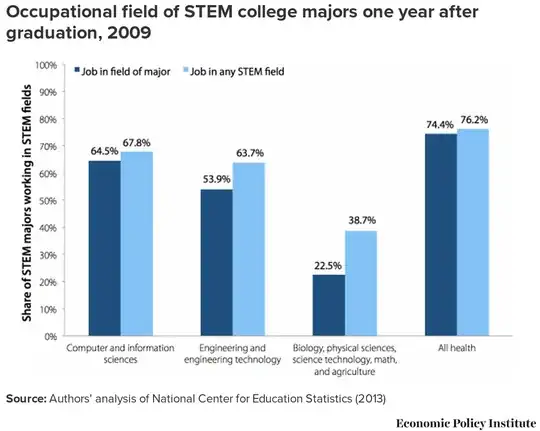From a 2013 EPI report as highlighed in an article published in The American Prospect:
As the EPI report lays bare, the common wisdom about our STEM problem is mistaken: We are not facing a shortage of STEM-qualified workers. In fact, we appear to have a considerable STEM surplus. Only half of students graduating with a STEM degree are able to find STEM jobs.
The actual report not only talks about STEM in general, but also has a more detailed suvey in IT:
For every two students that U.S. colleges graduate with STEM degrees, only one is hired into a STEM job.
In computer and information science and in engineering, U.S. colleges graduate 50 percent more students than are hired into those fields each year; of the computer science graduates not entering the IT workforce, 32 percent say it is because IT jobs are unavailable, and 53 percent say they found better job opportunities outside of IT occupations. These responses suggest that the supply of graduates is substantially larger than the demand for them in industry.
Anyway, since EPI appears to have been involved in a number of controversies, I'd like to know if this finding (whether to STEM overall of just IT) is corroborated by others. Furthermore, it appears that the data is from 2009 (see slide below), so close the peak of the last financial crisis. So, I'd also like to know if the finding is reasonably generalizable across the last one or two decades because the implications drawn from it (either in The American Prospect or EPI report itself) don't have much in the way of "buts" or circumstantial caveats.
